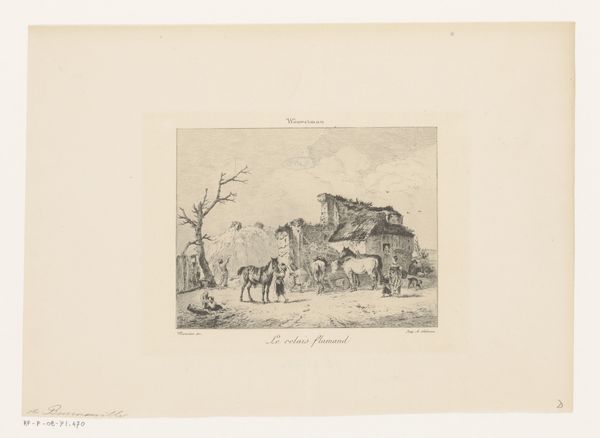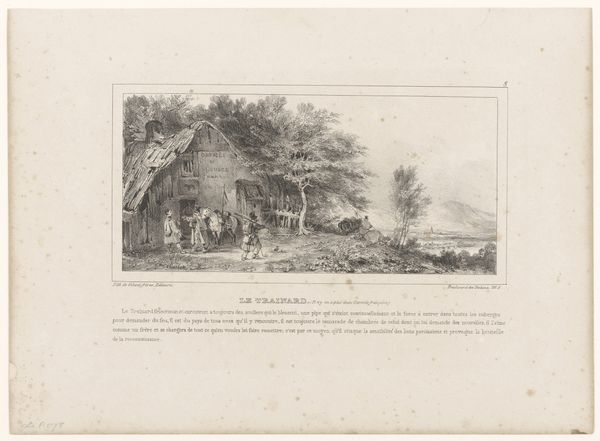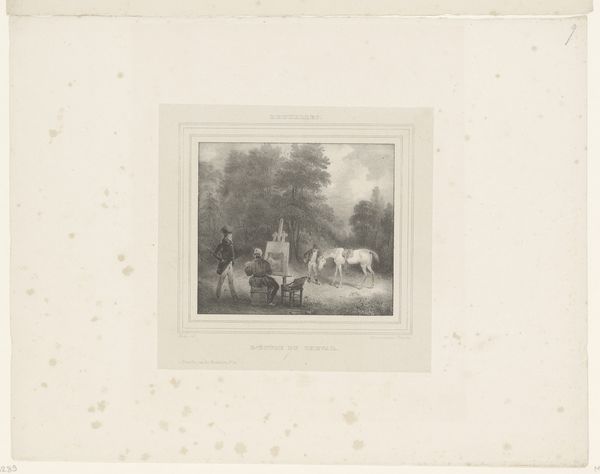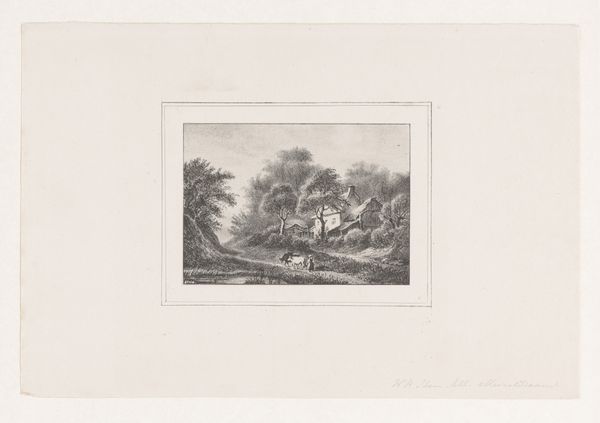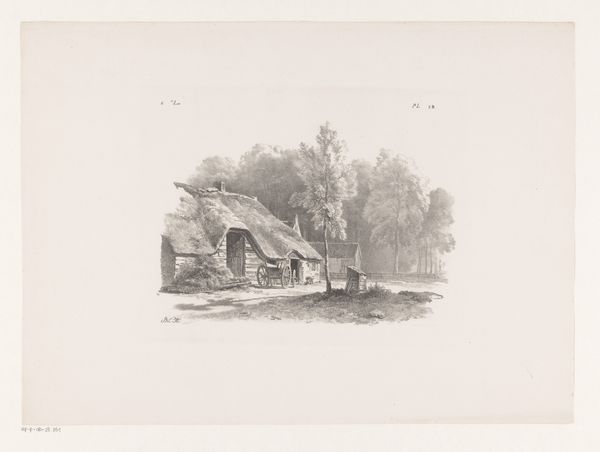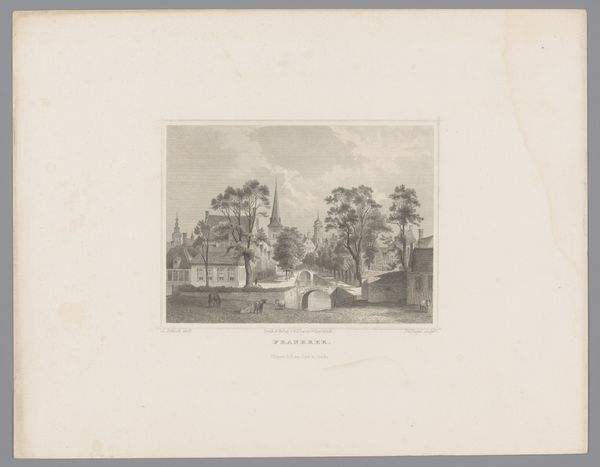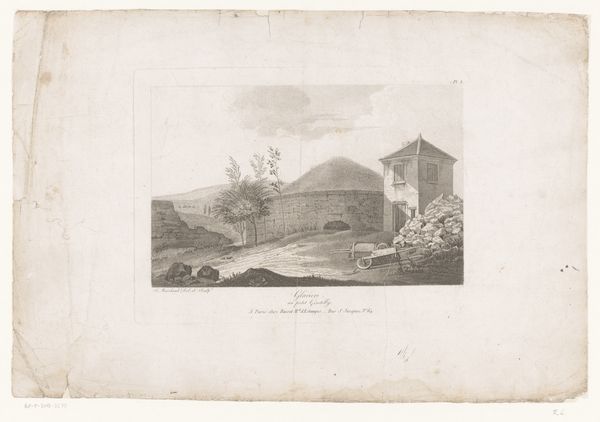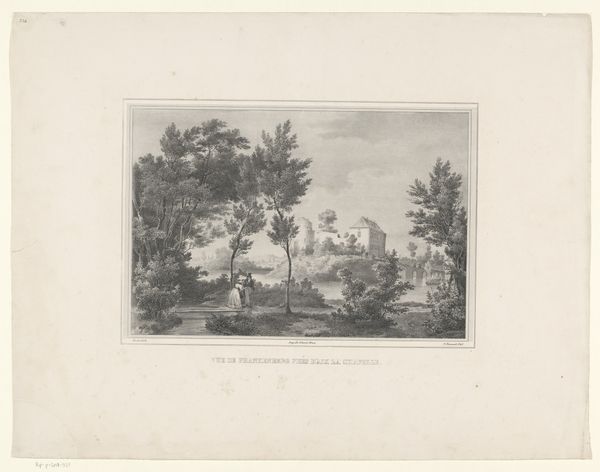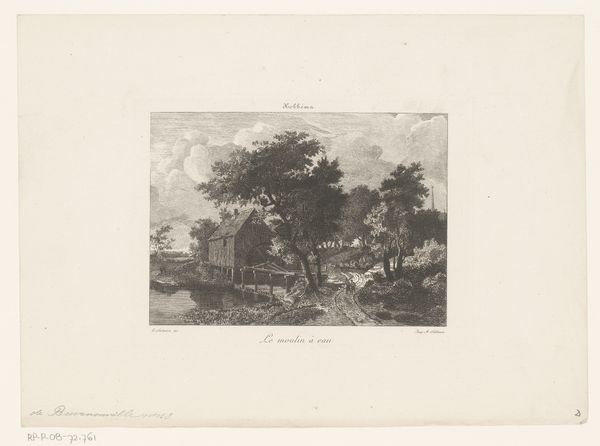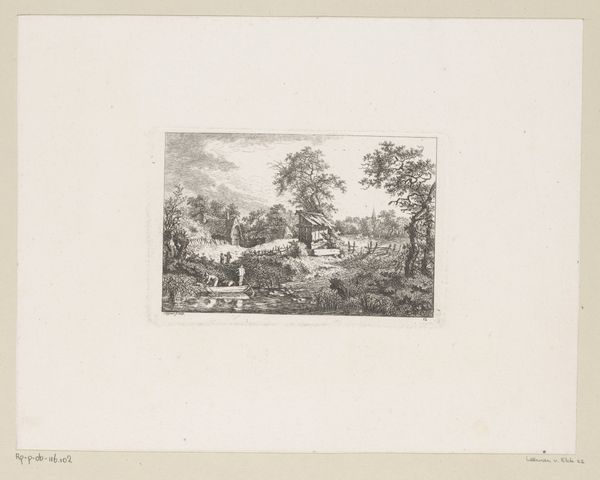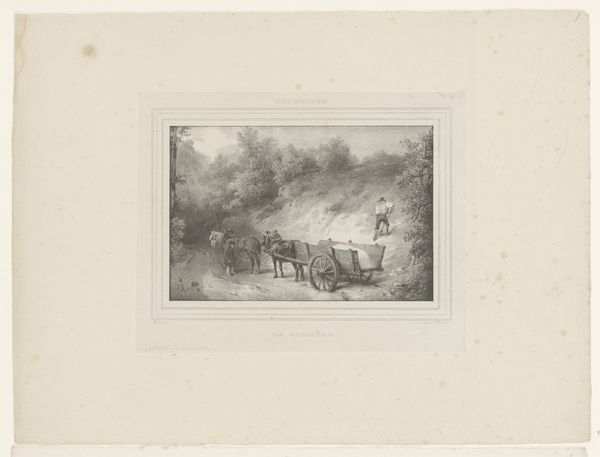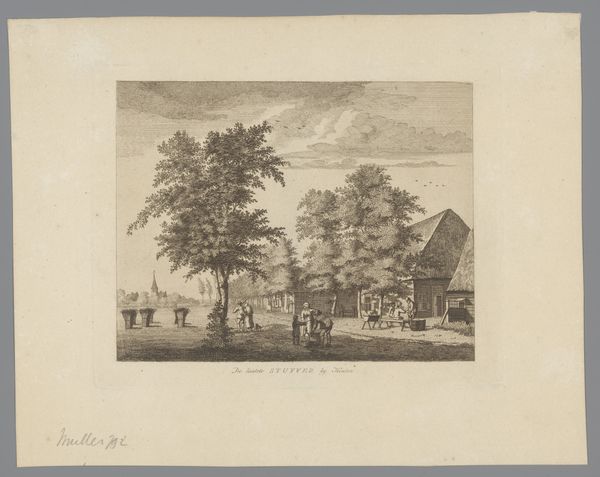
Dimensions: height 226 mm, width 326 mm
Copyright: Rijks Museum: Open Domain
Curator: Ah, here we have a piece by Emile Puttaert entitled "Landschap met watermolen," or "Landscape with Watermill" in English, dating back to 1851. It is an engraving. Editor: It’s interesting… there’s a stillness to it, despite depicting something functional. The limited palette evokes a memory, something held just out of reach, or a quiet afternoon long gone. Curator: That wistful atmosphere you pick up on is quite deliberate, fitting perfectly into the Romantic landscape tradition. It shows an idyllic view, but avoids referencing, let’s say, the more difficult truths of the period for working people in the mid-19th century. Editor: True. Yet the watermill itself, set in the landscape, does speak to industry and life intertwined with nature. Water in visual art is a deep and potent symbol, suggesting emotions, cleansing, mystery, the subconscious. Curator: Precisely. The image’s presentation, surrounded by an ornate border, hints that the print itself was likely intended as a decorative piece for display. Perhaps, a reminder of an imagined, pre-industrialized past, rather than an engagement with present day issues. Editor: And the tree—dominating the composition along with the watermill—is another ancient symbol. It can represent growth, wisdom, and the connection between heaven and earth, anchoring the whole scene symbolically. Curator: Yes, Puttaert employs several tried and true landscape and Romantic tropes here, solidifying the work within artistic conventions of the period, even down to the genre scene depiction and small details around the central elements. It would have appealed to a specific viewership seeking sentimental portrayals. Editor: So, while it offers comfort through familiar imagery, it might also be seen as intentionally turning a blind eye to the complex social realities of its time. Food for thought about what artists choose to represent, and perhaps more importantly, what they leave out. Curator: Indeed. It's a testament to the enduring power of symbols and the many layers of interpretation inherent in art. Editor: And it speaks to how deeply embedded images can become, how much a time and place can be wrapped up in what’s there – and isn’t.
Comments
No comments
Be the first to comment and join the conversation on the ultimate creative platform.

